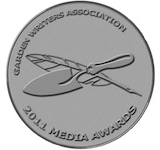Veggie Patch Brings Urban Agriculture Home
September 7, 2009 by Robin Plaskoff Horton

The winner of the 2008–2009 INDEX: AIGA Aspen Design Challenge, “Designing Water’s Future,” is Joanna Szczepanska from Monash University in Melbourne, Australia, selected for her urban gardening design, VeggiePatch. The Aspen Design Challenge is a biennial call to students worldwide, inviting them to address an international problem that is not only crucial in today’s world, but critical to our survival and the world that they will one day inherit.
VeggiePatch brings a low impact actionable tool to households that effectively reduces reliance on large scale agriculture.

VeggiePatch is a product that looks innovatively at urban agriculture. Adaptable and modular it integrates irrigation and vermicomposting to reduce the environmental impact of food in cities. Eliminating food miles, packaging, processing, and flood irrigation at the beginning of the food cycle; and CO2 emissions, landfill space and transport at the end, VeggiePatch is a tool which can be used by urban residents to reduce their eco-footprint. Using post-consumer waste such as cardboard with banana paper and tyre crumb, Veggiepatch utilizes recycled materials in fresh new ways, which support its functionality, final disassembly and recycling. Basing forms on ecodesign principals, plant and worm requirements, VeggiePatch provides a highly efficient method of urban farming, which is simple and closes the food waste cycle.

How it compares: VeggiePatch is an alternative to large scale farming, which accounts for 456 million hectares, or 59 percent of land in Australia today. “Agriculture is also the largest consumer of water in Australia; in 1996-97 it accounted for 15,502 gigaliters or 70 percent of total water use.” In addition, on average throughout the states, 70 percent of the irrigation systems used in Australia relies on flood irrigation of crops. Flood irrigation is the least efficient form of irrigating crops as the process entails over-saturating crops with water of which a majority is lost to evaporation. A method, which is associated with deterioration of soil and water quality, inclusive of, increased soil acidity and salinity.

Using drip irrigation that can be adjusted and fitted close to a plants root structure makes VeggiePatch water efficient and economical with water, at using fresh water or filtered gray water to irrigate plants. The slow rate of water flow allows all the water to be absorbed by the soil, and in a well-tuned system little water is wasted by means of excessive water use, and evaporation. This irrigation is compression molded into the top sheet making it functional at any length, and easily recyclable.

Watering for 5 to 15 minutes twice a week once plants are established should maintain plants within the product. Adjustable drip emitters generally have a range of 0–30 liters per hour. In a meter-long VeggiePatch with 15 cultivation pockets, watering at a rate of 5 liters per hectare for 10 minutes will use a total of 12.5 liters of water, which is more than sufficient for most vegetables. This type of irrigation uses a lot less water than flood irrigation that is most commonly practices in large-scale agriculture in Australia. Putting that in perspective, a leaking tap that drips once every second will waste 30 liters of fresh water a day. Older toilets use up to 18 liters of water for each flush, with the average single flush toilet using 12 liters.

Swales and Contours: VeggiePatch was influenced by rolling hills or pastures, and embossed patterning on the top of the product mimics topographic maps. This replication of swales and contours, and use of embossed patterning (channels), adds visual interest and maximises water retention when it rains.


 e-mail a friend
e-mail a friend


















Pretty cool design. We definitely need more all-in-one systems like this.
“VeggiePatch brings a low impact actionable tool to households that effectively reduces reliance on large scale agriculture.” – this statement really hits home with me.
— December 31, 2009 @ 14:51